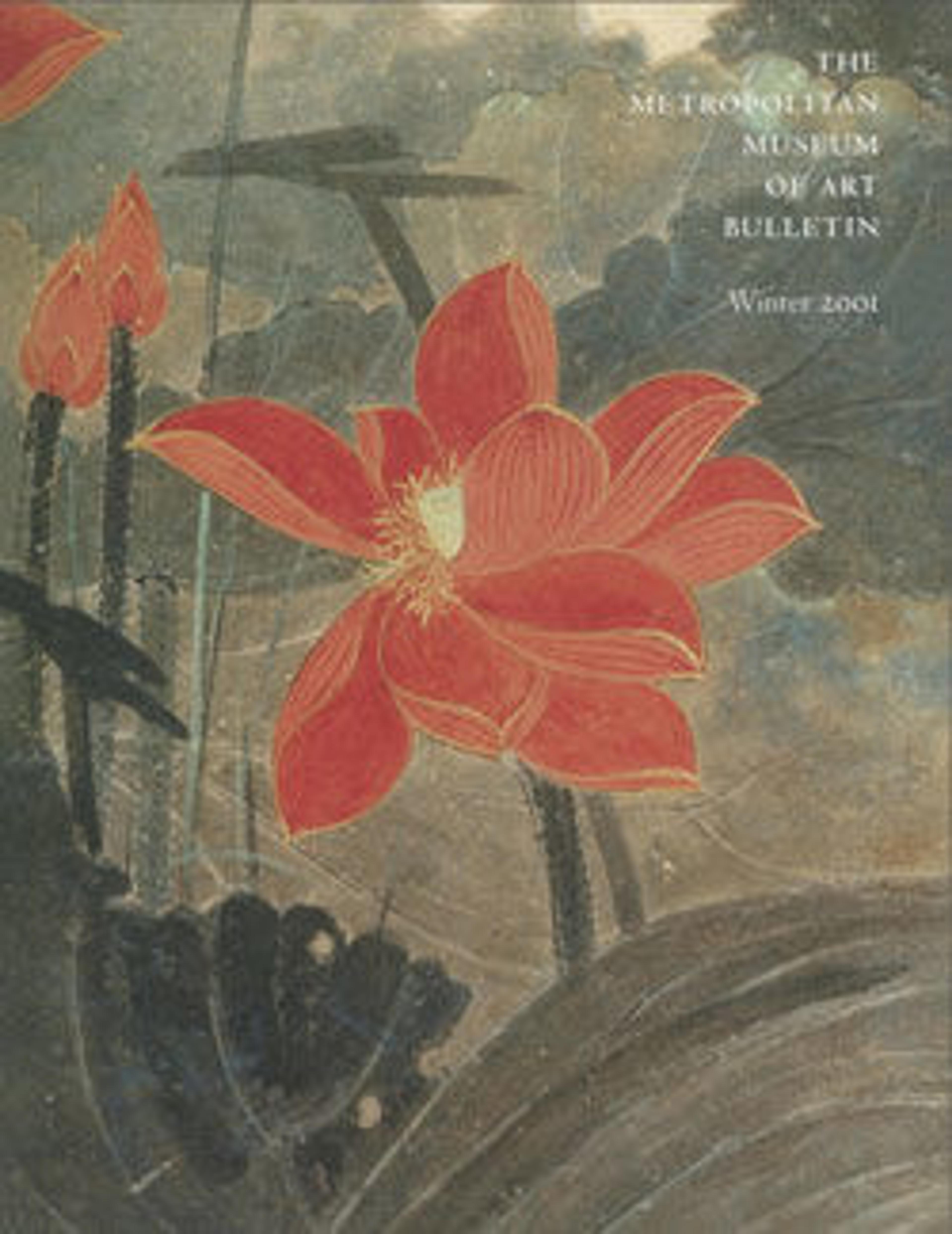Lotus
Zhang Daqian's mother taught him to paint flowers when he was a child. At the age of nineteen he left his native Sichuan Province and went to Kyoto to study textile weaving and dyeing. When he returned to China in 1919, he lived in Shanghai and Suzhou, where he immersed himself in the study of traditional painting. Between 1940 and 1943 he studied, catalogued, and made copies of the brilliantly colored wall paintings of the Buddhist cave temples, mostly fifth to tenth century, in the western oasis of Dunhuang.
This painting epitomizes Zhang's ability to synthesize diverse stylistic sources. The bold ink-wash lotus leaves reveal his early fascination with the expressive style of Bada Shanren (1626–1705); the descriptive treatment of the blossoms and water plants reflects his mastery of academic bird-and-flower painting; the vivid palette and ink washes suffused with blurry highlights of red and green reveal his familiarity with the Japanese artists of the Nihonga school. Zhang's inscription suggests that he was inspired by the visions of paradise at Dunhuang. Stylistically, however, this image has nothing to do with early models; instead, its sumptuous style comes closest to the decorative imagery of modern Japanese flower paintings:
Blue, yellow, red, and white express [Buddha's] infinite benevolence.I offer these lotuses as Buddha's manifestation of joyfulness.
(Wen Fong, trans., Between Two Cultures: Late-Nineteenth- and Early-Twentieth-Century Chinese Paintings from the Robert H. Ellsworth Collection in The Metropolitan Museum of Art [New York: The Metropolitan Museum of Art, 2001], p. 201)
This painting epitomizes Zhang's ability to synthesize diverse stylistic sources. The bold ink-wash lotus leaves reveal his early fascination with the expressive style of Bada Shanren (1626–1705); the descriptive treatment of the blossoms and water plants reflects his mastery of academic bird-and-flower painting; the vivid palette and ink washes suffused with blurry highlights of red and green reveal his familiarity with the Japanese artists of the Nihonga school. Zhang's inscription suggests that he was inspired by the visions of paradise at Dunhuang. Stylistically, however, this image has nothing to do with early models; instead, its sumptuous style comes closest to the decorative imagery of modern Japanese flower paintings:
Blue, yellow, red, and white express [Buddha's] infinite benevolence.I offer these lotuses as Buddha's manifestation of joyfulness.
(Wen Fong, trans., Between Two Cultures: Late-Nineteenth- and Early-Twentieth-Century Chinese Paintings from the Robert H. Ellsworth Collection in The Metropolitan Museum of Art [New York: The Metropolitan Museum of Art, 2001], p. 201)
Artwork Details
- 現代 張大千 紅荷圖 軸
- Title:Lotus
- Artist:Chang Dai-chien (Chinese, 1899–1983)
- Period:Republic period (1912–49)
- Date:dated 1946
- Culture:China
- Medium:Hanging scroll; ink and color on paper
- Dimensions:59 1/2 x 28 1/16 in. (151.1 x 71.2 cm)
- Classification:Paintings
- Credit Line:Gift of Robert Hatfield Ellsworth, in memory of La Ferne Hatfield Ellsworth, 1986
- Object Number:1986.267.360
- Curatorial Department: Asian Art
More Artwork
Research Resources
The Met provides unparalleled resources for research and welcomes an international community of students and scholars. The Met's Open Access API is where creators and researchers can connect to the The Met collection. Open Access data and public domain images are available for unrestricted commercial and noncommercial use without permission or fee.
To request images under copyright and other restrictions, please use this Image Request form.
Feedback
We continue to research and examine historical and cultural context for objects in The Met collection. If you have comments or questions about this object record, please contact us using the form below. The Museum looks forward to receiving your comments.
